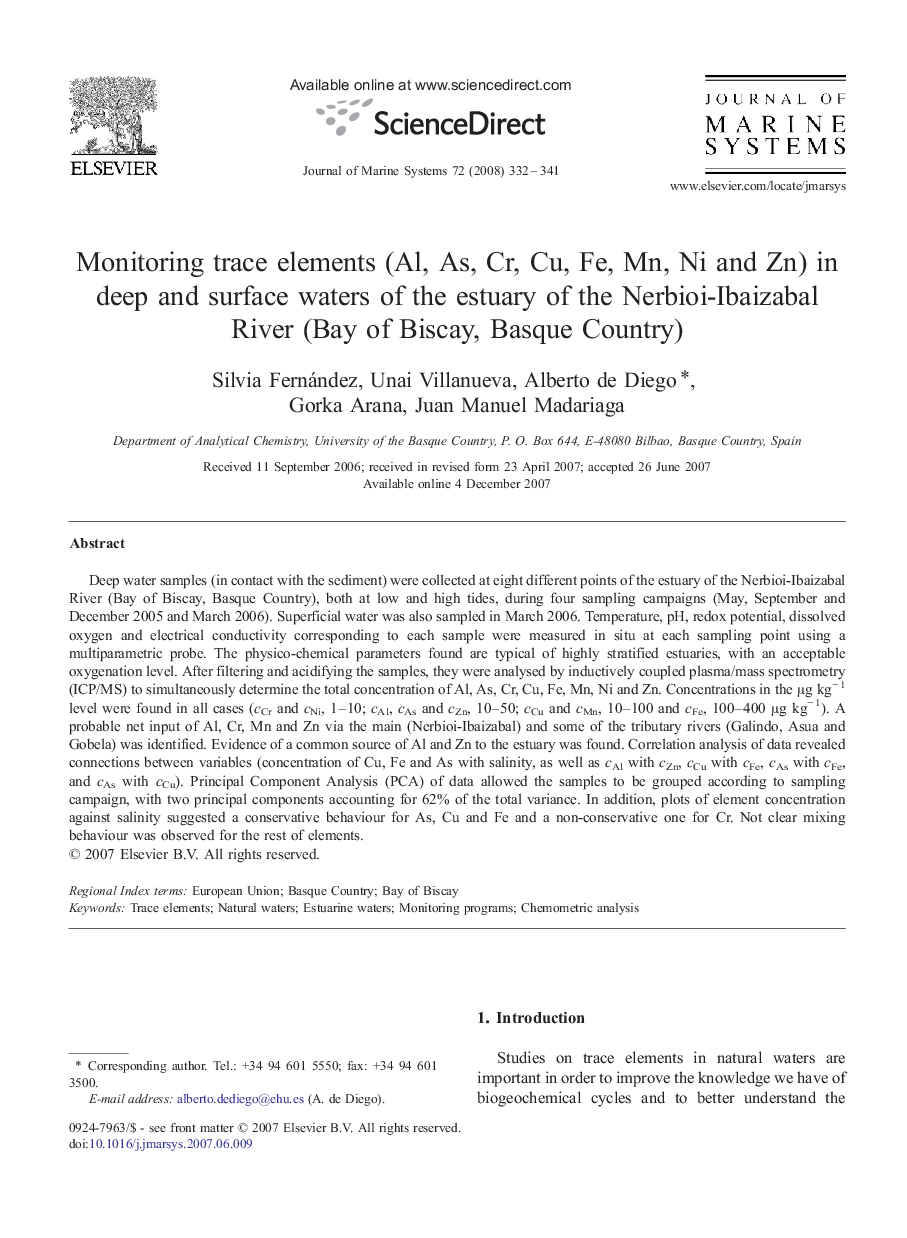| Article ID | Journal | Published Year | Pages | File Type |
|---|---|---|---|---|
| 4548847 | Journal of Marine Systems | 2008 | 10 Pages |
Deep water samples (in contact with the sediment) were collected at eight different points of the estuary of the Nerbioi-Ibaizabal River (Bay of Biscay, Basque Country), both at low and high tides, during four sampling campaigns (May, September and December 2005 and March 2006). Superficial water was also sampled in March 2006. Temperature, pH, redox potential, dissolved oxygen and electrical conductivity corresponding to each sample were measured in situ at each sampling point using a multiparametric probe. The physico-chemical parameters found are typical of highly stratified estuaries, with an acceptable oxygenation level. After filtering and acidifying the samples, they were analysed by inductively coupled plasma/mass spectrometry (ICP/MS) to simultaneously determine the total concentration of Al, As, Cr, Cu, Fe, Mn, Ni and Zn. Concentrations in the μg kg− 1 level were found in all cases (cCr and cNi, 1–10; cAl, cAs and cZn, 10–50; cCu and cMn, 10–100 and cFe, 100–400 μg kg− 1). A probable net input of Al, Cr, Mn and Zn via the main (Nerbioi-Ibaizabal) and some of the tributary rivers (Galindo, Asua and Gobela) was identified. Evidence of a common source of Al and Zn to the estuary was found. Correlation analysis of data revealed connections between variables (concentration of Cu, Fe and As with salinity, as well as cAl with cZn, cCu with cFe, cAs with cFe, and cAs with cCu). Principal Component Analysis (PCA) of data allowed the samples to be grouped according to sampling campaign, with two principal components accounting for 62% of the total variance. In addition, plots of element concentration against salinity suggested a conservative behaviour for As, Cu and Fe and a non-conservative one for Cr. Not clear mixing behaviour was observed for the rest of elements.
